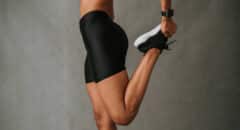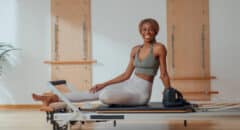 If you want to shed fat, you have burn calories. The fastest way to do that?
If you want to shed fat, you have burn calories. The fastest way to do that?
Work out at an optimal training heart rate.
But how do you figure out which target heart rate is the right rate for you?
According to Mayo Clinic, one of the best ways to gauge your exercise intensity is to see how hard your heart is beating during exercise. To use this method, you first have to figure out your maximum heart rate, which is the upper limit of what your cardiovascular system can handle during physical activity.
The basic way to calculate your maximum heart rate is to take 220 minus your age. For example, if you’re 45 years old, subtract 45 from 220, to get a maximum heart rate of 175. This is the maximum number of times your heart should beat per a minute while you’re exercising.
Once you know your maximum heart rate, you can calculate the best training heart rate for you. Why is this so important? If you work out below that zone, you may not burn as many calories, thus defeating the whole purpose of working out in the first place. If you work out above your target heart rate, you may risk injury or overexertion. Or, you may not be able to work out as long as you need to.
How To Figure Out Your Target Heart Rate
To determine your desired target heart rate zone:
- Subtract your age from 220 to get your maximum heart rate.
- Multiple that number by 0.7 (70 percent) to determine the lower end of your target heart rate zone.
- Multiply your maximum heart rate by 0.85 (85 percent) to determine the upper end of your target heart rate zone.
For example, if you’re 45 and you want to figure out your target heart rate zone for light activity, subtract 45 from 220 to get 175, your maximum heart rate. To get the lower end of your target zone, multiply 175 by 0.7 to get 123. If you want the most intense workout for you, multiply 175 by 0.85 to get 149.
Exercise Intensity Levels
Light intensity: 40 to 50 percent of your maximum heart rate (ideal for beginners)
Moderate intensity: 50 to 70 percent of your maximum heart rate
Vigorous intensity: 70 to 85 percent of your maximum heart rate (ideal for those who are more advanced).
How To Tell If You’re Working Out At The Right Rate
Here’s how to check your heart rate while you’re exercising:
- Place two fingers between the bone and the tendon over your radial artery — which is located on the thumb side of your wrist. Count the number of beats you feel for 15 seconds.
- Multiply this number by 4 to calculate your beats per minute.
Target Heart Rate Tips To Keep In Mind
It’s very important to remember that the calculating your maximum heart rate is a guide: you may actually have a higher or lower maximum heart rate, sometimes by as much as 15 to 20 beats per minute. In addition, several types of medications can lower your heart rate (and thus your target heart rate). These differences are so small that most casual athletes don’t need to be concerned about this. But if you want a more definitive heart rate guide, consider talking with your doctor, a physiologist, or a certified personal trainer.








